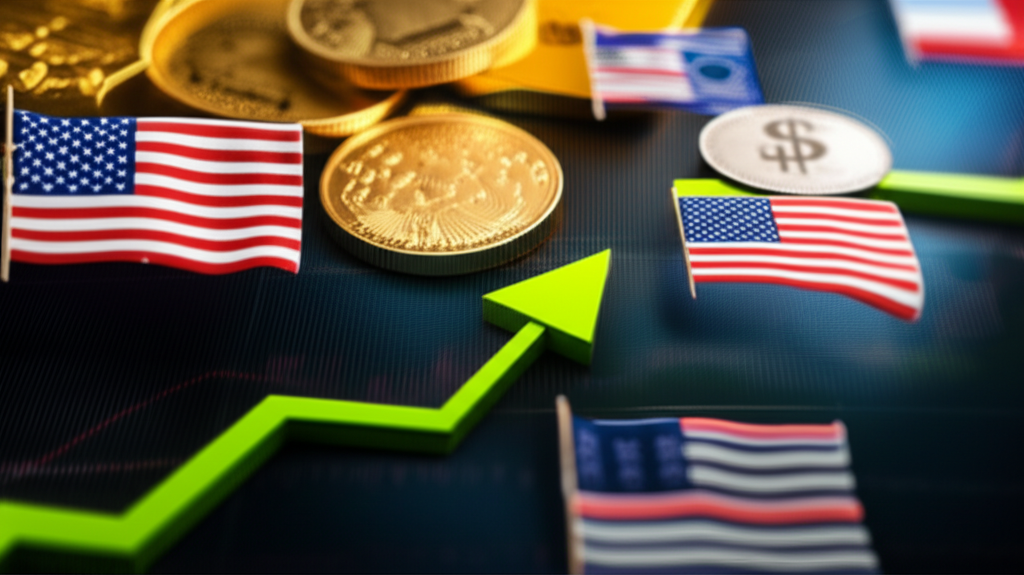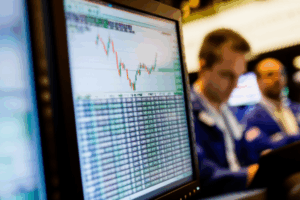Safe-Haven Flows Signal Risk-Off Shift Across Asset Classes
In the complex tapestry of global finance, shifts in investor sentiment often act as early warning signals, guiding market participants through turbulent waters. Currently, a pronounced move into “safe-haven” assets is indicating a broader “risk-off” mood pervading financial markets worldwide. For young adults navigating their financial journeys, understanding these dynamics is crucial, as they directly impact everything from stock portfolios to long-term investment strategies. This pervasive caution underscores a moment of significant recalibration, driven by a confluence of economic uncertainties and geopolitical tensions.
At its core, a “safe-haven flow” represents capital moving away from riskier investmentssuch as equities, high-yield bonds, or emerging market assetsand into assets perceived as stable or likely to retain their value during periods of market turmoil. Traditional safe havens include gold, which has historically served as a store of value; government bonds from highly stable economies like the U.S. Treasuries, Japanese Yen, or Swiss Franc, known for their liquidity and reliability; and, in some contexts, the U.S. Dollar itself due to its global reserve currency status. The current surge in demand for these assets signals that investors are prioritizing capital preservation over aggressive growth, a hallmark of a “risk-off” environment.
This defensive posture isn’t arbitrary; it’s a direct response to a deteriorating global economic outlook. Several powerful forces are contributing to this shift. Foremost among them is persistent, elevated inflation across major economies. Central banks, notably the U.S. Federal Reserve, the European Central Bank, and the Bank of England, are aggressively hiking interest rates to combat rising prices. While necessary, rapid rate increases can dampen economic activity, raising fears of a recession. Higher borrowing costs for businesses and consumers can stifle spending and investment, slowing growth. Consequently, corporate earnings forecasts become less certain, making equity markets less attractive.
Beyond monetary policy, geopolitical instability casts a long shadow. Ongoing conflicts, exacerbated by energy supply concerns and commodity price volatility, contribute to an atmosphere of unpredictability. Supply chain disruptions, remnants of the pandemic and compounded by new geopolitical realities, continue to fuel inflationary pressures and hinder global trade, further clouding the economic horizon. Add to this the lingering concerns about specific regional economic slowdowns, such as those in China due to its zero-COVID policy and property sector woes, and you have a recipe for widespread investor anxiety.
The evidence of this risk-off shift is palpable across asset classes. In equity markets, we’ve witnessed significant corrections, particularly in growth-oriented sectors like technology, which are often more sensitive to rising interest rates and economic slowdowns. Investors are divesting from companies with high valuations based on future growth prospects, opting instead for “defensive” sectors like utilities, consumer staples, and healthcare, which tend to be more resilient during downturns due to their stable demand. The S&P 500 and Nasdaq indices, bellwethers of market sentiment, have experienced substantial pullbacks, reflecting this broader flight from risk.
In the fixed-income market, the dynamics are equally telling. While rising interest rates generally push bond prices down, the intense demand for U.S. Treasuries and other sovereign safe-haven bonds has provided a counterbalancing force. Investors are willing to accept lower yields (meaning higher prices) on these assets for the security and liquidity they offer, demonstrating their preference for safety over return in the current climate. This is particularly noticeable in longer-dated bonds, which historically offer more protection during economic slowdowns.
Commodity markets also reflect this sentiment. Gold, the classic inflation hedge and safe haven, has seen renewed interest, with its price often moving inversely to market confidence. While some industrial commodities might suffer from recession fears, gold’s appeal as a store of value remains strong. Even currencies are impacted, with the Japanese Yen and Swiss Franc strengthening against other major currencies as global investors seek their perceived stability. The U.S. Dollar, too, often benefits from safe-haven flows during times of global stress, due to its status as the world’s primary reserve currency and the depth of its financial markets.
For young investors, this environment underscores the importance of a diversified portfolio and a clear understanding of risk tolerance. While it might be tempting to chase high returns during bull markets, the current risk-off sentiment highlights the cyclical nature of financial markets and the necessity of preparing for downturns. It’s a period where prudence, fundamental analysis, and a long-term perspective can be more valuable than speculative bets. Understanding the underlying forces driving these safe-haven flows is not just academic; it’s essential for making informed decisions that protect and grow your wealth in a volatile world. As long as inflation remains high, interest rates continue to climb, and geopolitical tensions persist, the flight to safety is likely to remain a dominant theme in financial markets, signaling a cautious road ahead.





